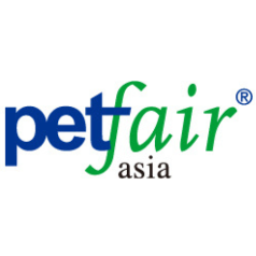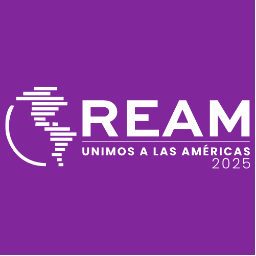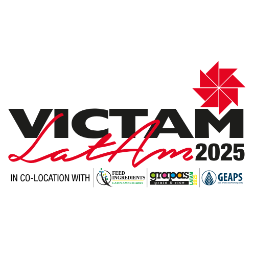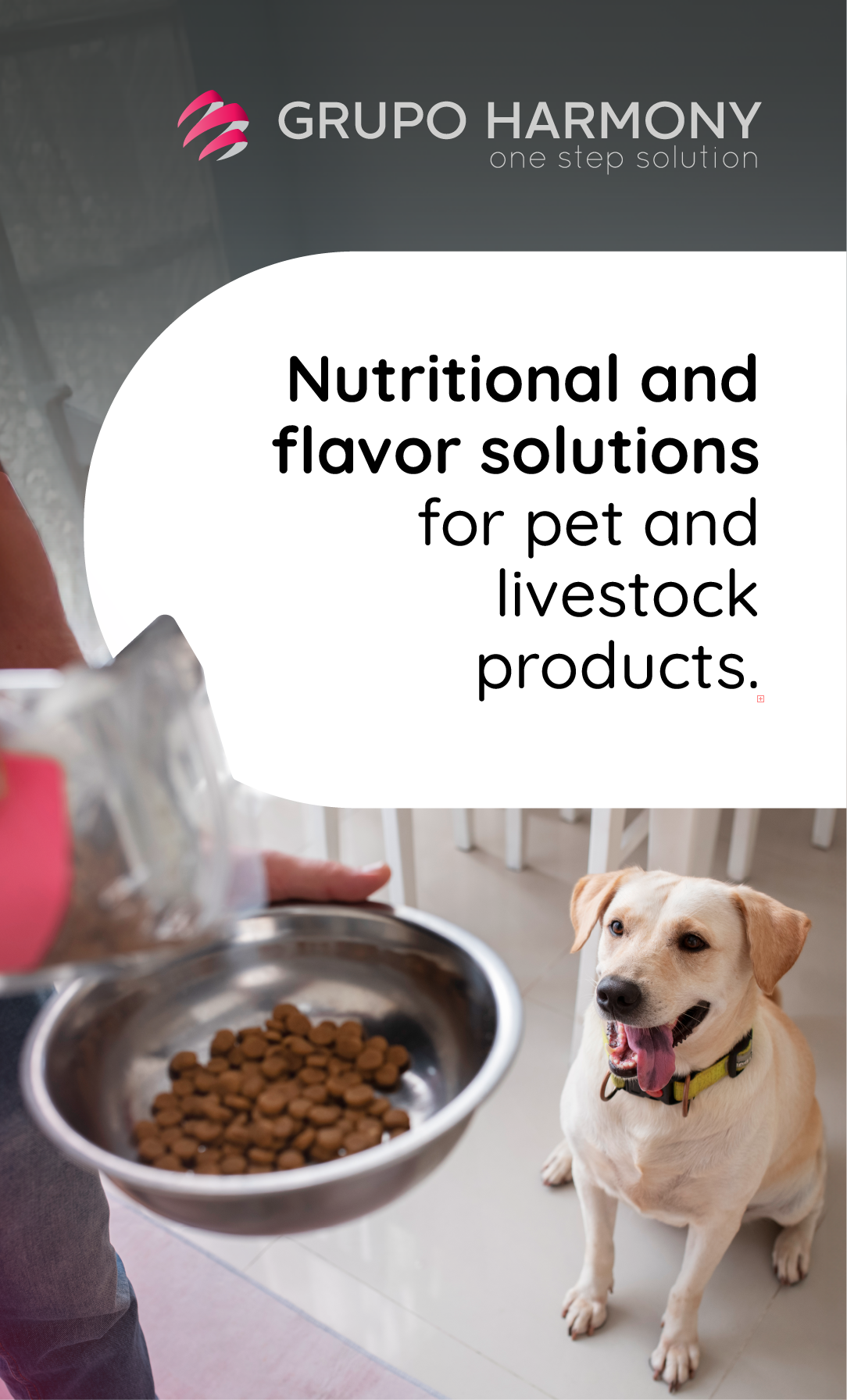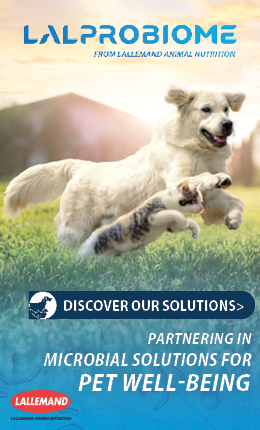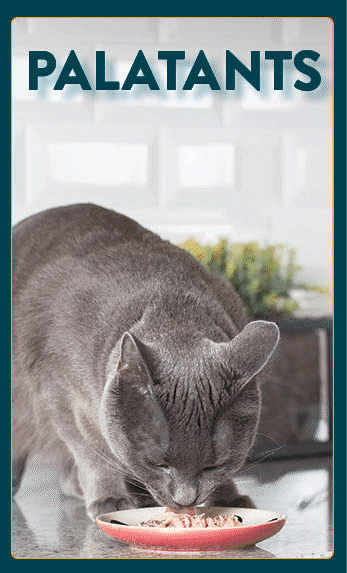Among the odor adsorbent options used today, three stand out for being frequently present in different brands and categories of pet food: natural zeolite, bentonite, and yucca extract, each with its characteristics and modes of action. Knowing each of them better can be very important when optimizing the development of a product and its market positioning strategy.
The zeolite with proven benefits for pet food is the clinoptilolite type. It is a natural crystalline mineral with a structure full of cavities formed by chemical bonds, which confirms a large surface area and high adsorption capacity. One of the most important properties of zeolite is its high cation exchange capacity (CEC) compared to all other minerals of this type. Cation exchange is a process by which ions present on the surface of the zeolite are exchanged for others present in the surrounding solution. Its structure contains empty spaces that can be filled with ions, water, and other molecules. This gives the zeolite a high adsorption capacity for ions, especially cations. When added to dog and cat food, zeolite can adsorb compounds in the form of cations present in digestion, including ammonia, responsible for the unwanted odor of feces. Additionally, zeolite's ability to absorb moisture improves the format of animal feces and can also help extend the shelf life of food, preventing spoilage due to high humidity and toxin contamination, as it is also a mycotoxin adsorbent.
Bentonite, a clay composed essentially of minerals from the group of smectites and mortmorillonites, is characterized by its great capacity to swell when mixed with water since it has a laminar chemical structure with a surface charge between 0.2 and 0.6 by formula unit and the lamellae move away in the presence of water, acting like a sponge. Therefore, when added to animal feed, bentonite is capable of very effectively absorbing the moisture present in feces. The mechanism of action of bentonite in relation to odor reduction implies that its adsorption capacity also binds to compounds, such as ammonia, through cation exchange, secondary to its swelling action. However, it is important to note that the effectiveness of bentonite specifically in reducing fecal odor in dogs and cats is not well understood and may vary depending on several factors, including its purity, type, and purpose of inclusion in the formula.
Yucca extract is extracted from the Yucca schidigera plant, commonly found in deserts, and has saponin as one of its components, which has been studied in companion animals for some decades. One of the mechanisms by which cassava extract reduces the odor of excreta is by inhibiting urease, an enzyme that converts urea, a product of nitrogen metabolism, into ammonia. Thus, the lower the action of urease, the lower the amount of ammonia present in the feces and the subsequent reduction in fecal odor. Another hypothesis refers to the action of glycocomponents, the water-soluble part of the cassava extract, which has an affinity for ammonia and transforms it into nitrate and nitrite. The quality of the cassava extract is evaluated by the quantity and quality of the saponins and extract necessary to neutralize 50% of the ammonia in a 'standard' solution, a parameter known as B50.
The following table compares the main properties and benefits of each odor adsorbent described.
According to the table, zeolite has a greater ion exchange capacity, greater removal of ammoniacal nitrogen, and a slightly lower water removal capacity since, being laminar, it swells and can absorb more water. Considering the physicochemical properties of the additives, we can infer that zeolite has greater efficiency in removing ammonia due to its greater cation exchange capacity, compared to other additives evaluated for fecal odor.
Regarding the performance of in vivo tests, we found several studies that evaluated the inclusion of clinoptilolite zeolite and cassava extract at different levels of inclusion in diets for dogs and cats, and that also compared these two additives with each other. For bentonite, there are no studies that support evaluating inclusion at different levels, making it difficult to understand what the optimal level of use would be to reduce fecal odor in pet foods. For this reason, products that use bentonite as an additive, usually in the economy or standard category, use it to improve fecal scores and not to reduce odor.
A Maia et al. (2010) study evaluated the fecal odor of dogs at different zeolite levels of 0.50, 0.75, and 1.00% and YSE at a concentration of 125, 250, or 375 ppm in the diet of healthy dogs. Diets with zeolite at levels of 0.75 and 1.00%, respectively, had better classification in the sensory analysis, indicating a significant reduction in the odor of the evaluated material. Therefore, 0.75 and 1.0% levels of the additive provide a substantial reduction of fecal odor in the sensory analysis. This results in a high cation exchange and gas adsorption capacity of the clinoptilolite zeolite, which adsorbs the gases produced during digestion, removing them from the animal's intestinal gastric tract without releasing them into the environment.
Roque et al. (2011) added the same concentrations of zeolite and cassava extract for cats to a commercial food. The diet with 1.0% zeolite was considered similar to the control and inferior to the rest of the treatments. On the other hand, the doses of 0.5 and 0.75% of zeolite presented better fecal odor values than the control diet.
In practice, we see the use of zeolite more frequently in high-category and super premium food formulations, justified by the evaluation studies mentioned here and by its efficiency in eliminating odors and adjusting fecal score, being the first option for products foods with high added value. As has been demonstrated, cassava extract has an action on fecal odor, and, as it has an optimal inclusion level between 0.0125% and 0.035%, it is usually present in foods from premium to super-premium categories since the level of lower inclusion can reduce formula costs. However, a detailed evaluation is necessary, as cassava extract can cost up to more than 10 times the value of clinoptilolite zeolite.
Conclusion
Often, we come across commercial foods that use zeolite with yucca extract in the pet formula. By using these additives together in dog and cat foods, manufacturers aim to offer a comprehensive approach to animals' digestive and overall well-being. Zeolite is effective in improving fecal score and reducing odor, and, in association with yucca extract, these additives can promote beneficial effects on intestinal health, contributing to the long-term comfort and health of pets.
Source: All Pet Food Magazine
Bibliographic references:
MAIA, G. V. C. et al. Zeolites and Yucca schidigera in commercial ration for dogs: Palatability, digestibility and reduction of fecal odors. Revista Brasileira de Zootecnia, v. 39, n. 11, p. 2442-2446, 2010.
MOORE, D.M., REYNOLDS, JR. R. C., X-ray Diffraction and the Identification of Clay Minerals. Oxford University Press, Oxford, 1989. 332 p.
ROQUE, N. C. et al. Increasing levels of zeolite and Yucca schidigera in diets for adult cats. Revista Brasileira de Zootecnia, v. 40, n. 11, p. 2471-2475, 2011.
You could be interested: Understanding Minimally Processed: What It Really Means for Your Pets Food
About author
Ludmila Barbi T. BomcompagniBrazilian living in Mexico City, veterinarian with a master's degree in Animal Nutrition. Having experience in pet food formulation and raw materials evaluation, she currently dedicates to the study and development of functional additives for pet food nutrition.






















